
Spotfin croaker caught by Angel Hernandez at the Crystal Pier in San Diego
Croakers: Family Sciaenidae
Species: Roncador stearnsii (Steindachner, 1876); from the Spanish word roncador (in reference to a snorer) and stearnsii (referring to Robert E. C. Stearns, a 19th Century sea shell expert in San Francisco).
Alternate Names: Spot, spotties, golden croaker or roncador. Called roncador aleta manchada in Mexico.
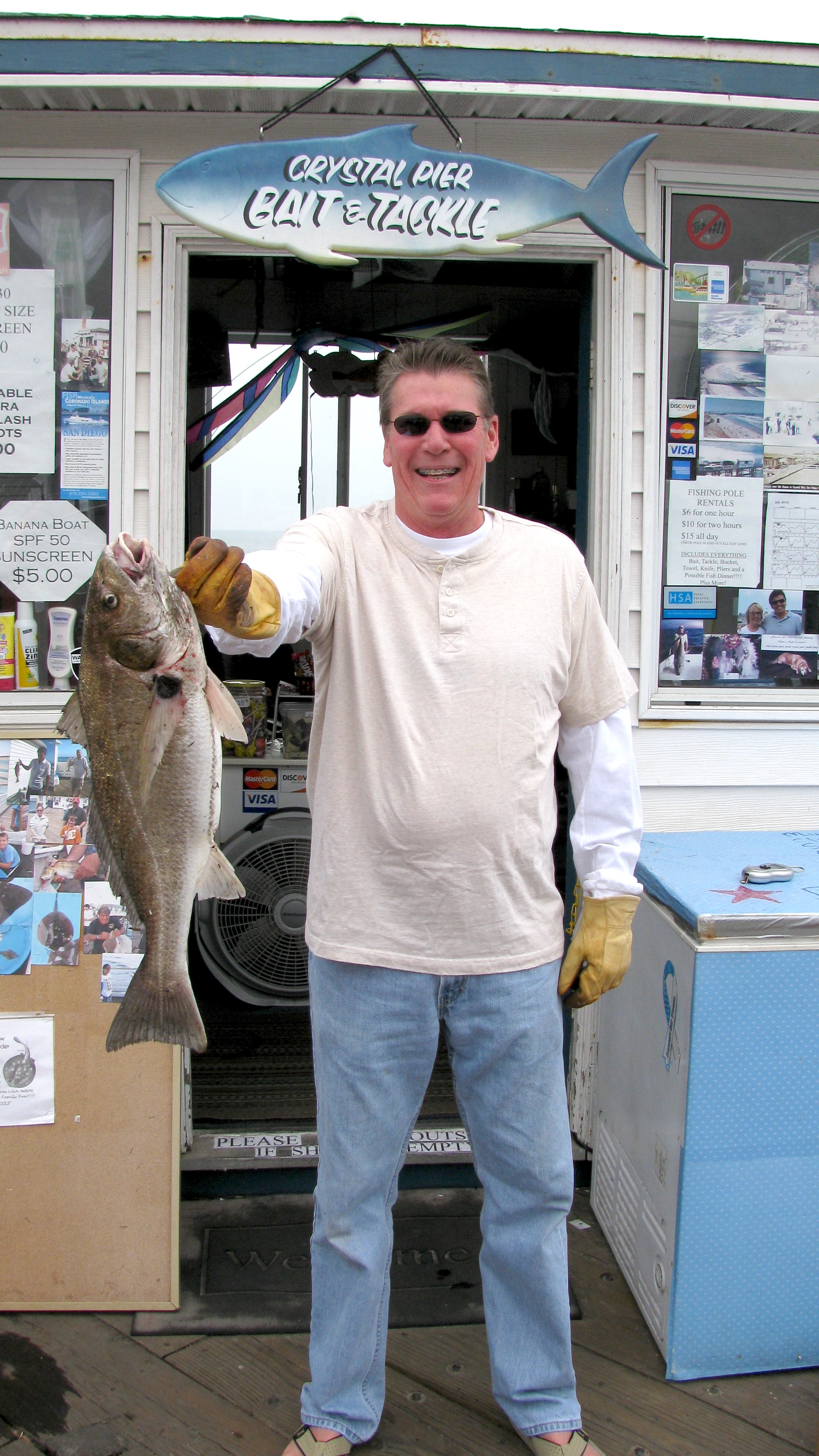
Spotfin croaker from the Crystal Pier in San Diego
Identification: A heavy-bodied croaker which has a large black spot at the base of the pectoral fin; the mouth is underneath the head (subterminal); they do not have a barbel on the chin (unlike most California croakers). Their coloring is metallic gray above and brassy on the sides. Occasionally you may see a beautiful, bright “golden” spotfin. This color phrase by larger males is during spawning and led, at one time, to the mistaken belief that there were two distinct species of spotfins. I’ve only caught a few spotfins over the years that had the bright gold coloring but each was a truly beautiful fish. Apparently the females do not acquire this golden coloring, instead they develop blackish streaks on their bellies during the spawning season.

Size: Reported to reach a length of 27 inches and a weight of 10 1/2 pounds (although the record fish would seem to contradict this usually given factoid). Most caught from piers are less than 20 inches and range from one to three pounds. A 26 ½-inch, 9 ¼-pound fish was 15 years old; reaches 18-19 years in age. The California angling record fish weighed 14 lb 0 oz and was taken at Playa del Rey in 1951 by Charles Dusart (and was apparently a freak of nature). The diving record fish weighed 8 Lbs 12 oz and was taken at Corona Del Mar in 1968.
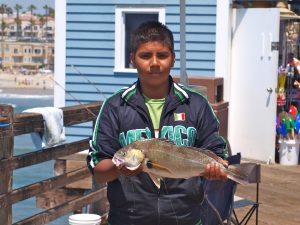
Spotfin croaker from the Oceanside Pier
Range: Mazatlán, Mexico, Gulf of Mexico, and along the Pacifioc coast from the tip of Baja California north to Point Conception, California. Common from Bahia Magdaalena to southern California (and most common from Los Angeles south). One specimen reported from south San Francisco Bay.

Spotfin taken by Charley at the Oceanside Pier
Habitat: Generally found in shallow-water sandy areas, both in bays and along the open coast but recorded to a depth of 73 feet. In coastal surf areas they tend to be in the slightly deeper waters beyond the innermost line of breakers (out to about a 30-foot depth). A difference in body shape, together with an air bladder, prevent them from feeding in the backwash of the surf, the common area of corbina and sand crabs. Like corbina, they will sometimes swim into bays and estuaries during the winter months while using the spring and summer months to feed in the open surf areas for food.
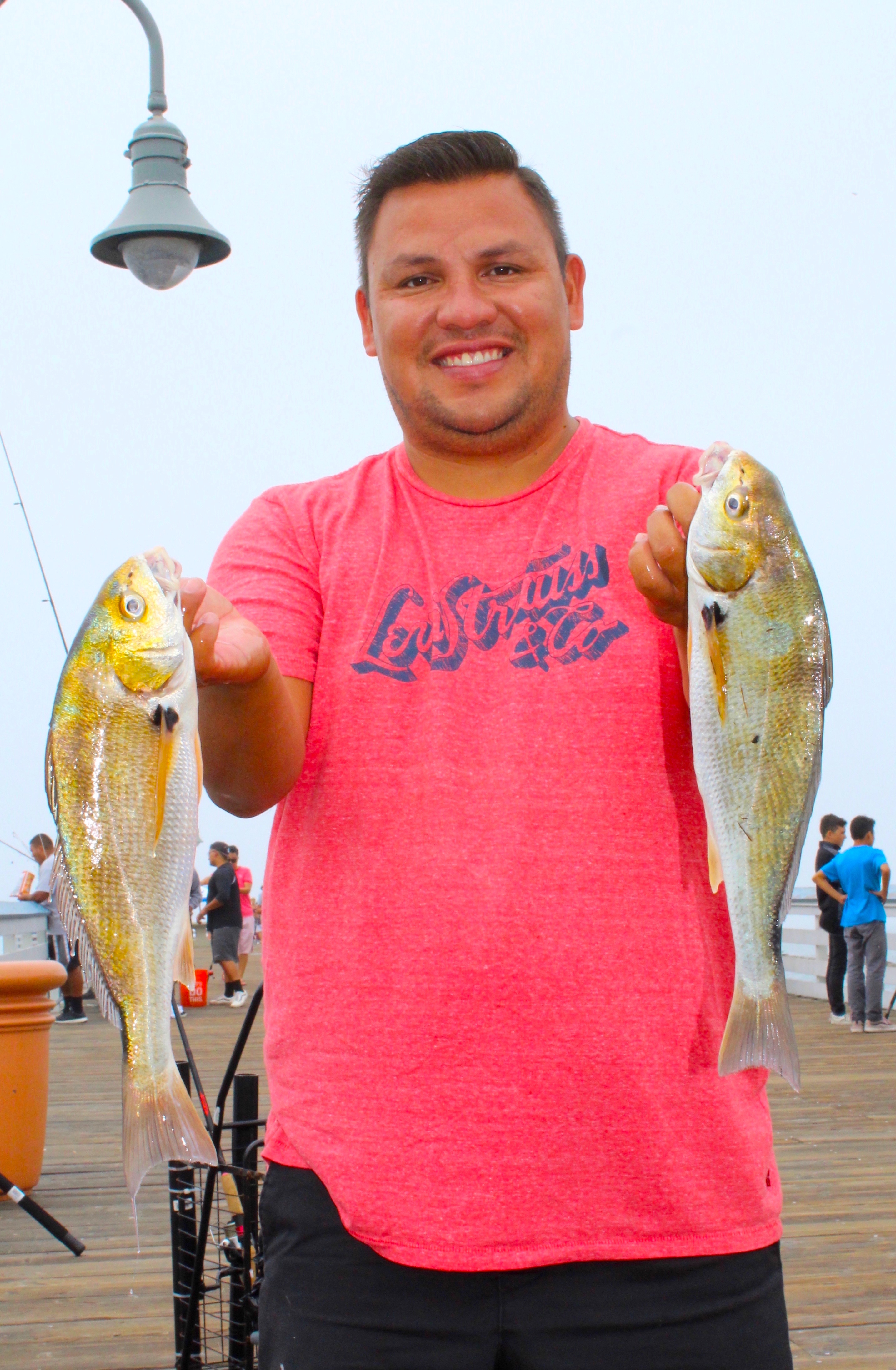
“Golden” spotfin croakers from the San Clemente Pier
Piers: Common at most bay and oceanfront piers north to Los Angeles Harbor; those that have a sand or mud bottom. Best bets: Embarcadeo Marina Pier, Shelter Island Pier, Crystal Pier, Oceanside Pier, Oceanside Harbor Pier, San Clemente Pier, Dana Point Harbor Pier, Huntington Beach Pier, Seal Beach Pier, Belmont Veterans Memorial Pier, and lately—the Santa Monica Pier.

Spotfin croaker from the Oceanside Harbor Pier
Shoreline: One of the main catches by sandy shore and bay anglers in southern California. Favored areas include Mission Bay, Newport Bay, and Alamitos Bay.

Spotfin taken by Richard at the Oceanside Pier
Boats: An inshore species but some are taken by boaters fishing the various bays in southern California.

Spotfin taken by Humberto at the Oceanside Pier
Bait and Tackle: Spotfin croaker have pharyngeal (throat) teeth made for crushing heavy shells and primarily feed on the bottom for clams, although polychaete worms and mussels are also a popular diet (studies on fish captured in Long Beach also revealed crabs, shrimp, serpent star fragments, scallops, sand stars and lots of crushed shells and sand in the bellies). Therefore, the best bait is clams, but ghost shrimp, fresh mussels, bloodworms, lugworms and innkeeper worms can also be good. Best tackle is a high/low leader with number 6 or 4 hooks fished directly on the bottom. Although spotfin may be caught year-round, the best time is late summer to fall. In addition, spotfin follow the tides, so fishermen should do the same. Fish two hours before and after a high tide, especially a late afternoon or evening tide. Late evening and night is the best time to catch spotfin croaker.
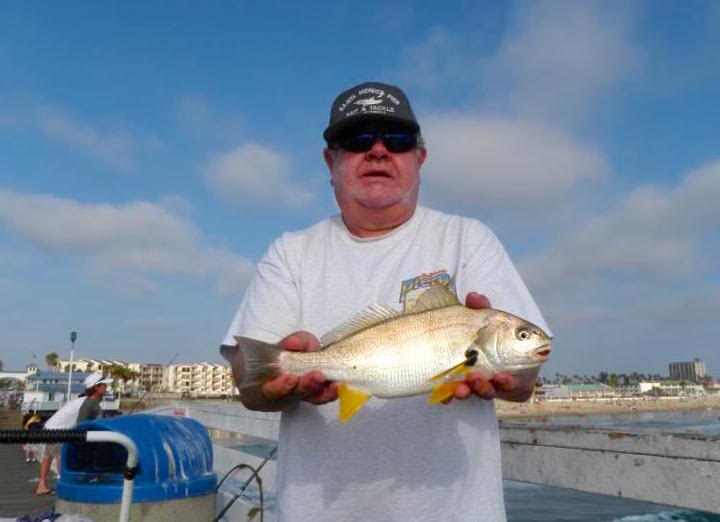
Spotfin croaker caught by KJ at the Crystal Pier in San Diego
Food Value: A good mild-flavored, soft textured and low-fat fish that shares the same problems with pollution as the other croaker species. They may be unsafe to eat in certain localities. Good pan-fried but perhaps better baked or broiled due to possible toxins.

Spotfin caught at the Ventura Pier
Comments: Spotfin croakers are one of the favorite inshore fishes of southern California. In bays, spotfin croaker tend to congregate in croaker holes; when these are discovered, the anglers can often return time after time for fish. It is much harder to find these holes and depressions around piers, but it can be done. Look for spots where the surf-line seems to flatten out; this often indicates a depression in the sand. Illegal to take in California with nets since 1909, or to buy or sell since 1915. Scientific studies indicated an increase in numbers in the late 1990s while anecdotal PFIC reports have shown a startling number of large spotfins being caught at piers in 2006-2010, especially those at Oceanside, Huntington Beach and Santa Monica.
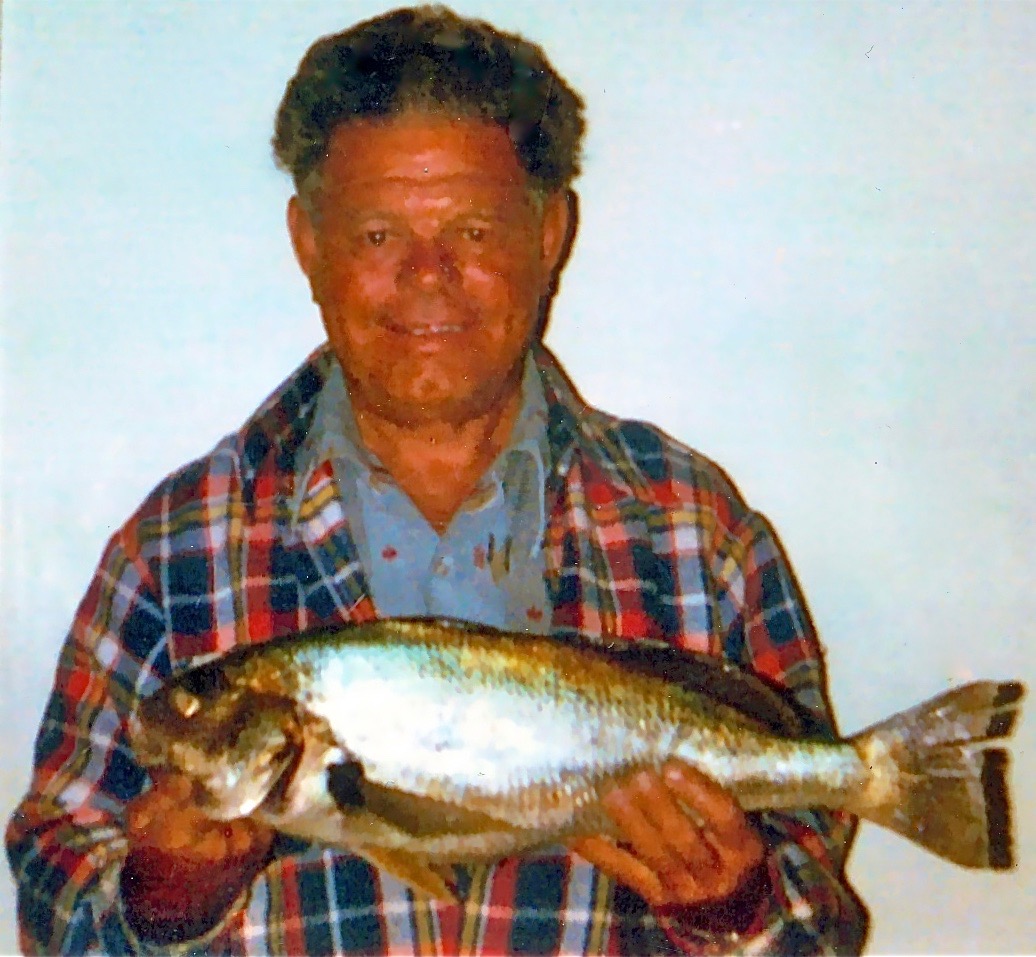
My dad and a nice spotfin from Mission Bay
Large “unofficial” spotfin croakers reported from piers
13 Lbs. — Seal Beach Pier, July 18, 1940
Source: Timely Tips on Outdoor Life, Paddy Driskel, Santa Ana Register, July 19, 1940
9 Lbs. 1 ½ oz. — Belmont Pier, W. S. Perrin, January 20, 1941
Source: Long Beach Independent, January 21, 1941
My friend landed a 33 inch spotfin last year in sd bay at 2 am. We chose to release the fish probably would have been a record though